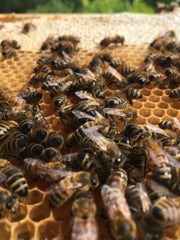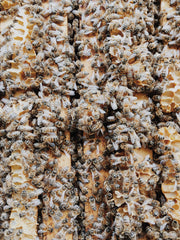Life in the Beehive – Queen, Workers and Drones
Not all honeybees are the same
First, we have the lady herself – the Queen.
A queen is fed exclusively with royal jelly and hatches 16 days after the egg is laid. But a queen without her realm – or in this case, her beehive – is worthless. She cannot collect nectar or pollen, nor produce wax. Her most important task is to ensure that the sperm she collects during her mating flight lasts her entire life – usually three to five years.
And the queen decides the sex of her offspring. Using her front legs, she measures the size of the cell opening. If the cell is large, she lays an unfertilized egg – which becomes a drone, i.e. a male. If the opening is small, she adds some sperm – a female worker bee will hatch. The power lies with her.
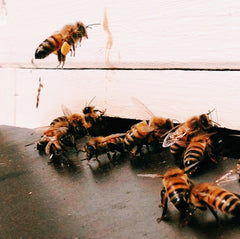
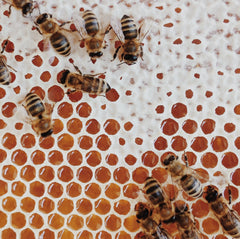
A Short Life Full of Tasks – The Incredible Journey of the Female Worker Bee
Female worker bees hatch after 21 days. A beehive often contains around 60,000 female workers.
The short life of a worker bee begins with cleaning – her own cell and herself. Once that is done, she takes on her first task: warming the brood nest.
From days 3 to 5, she becomes a nurse bee and feeds the older larvae. From day 6, it’s multitasking time: now she cares for the younger larvae, receives nectar from older foragers, packs pollen – and yes, she keeps cleaning.
Between days 12 and 18 of her life, she starts building comb. To do this, she secretes wax from her wax glands – did you know that beeswax is basically bee sweat? (Honey as bee vomit is now well known.)
From days 17 to 19, she becomes a guard of the hive, checking who may enter – only family members are welcome.
And then finally, she is allowed out into the world to collect nectar – up to 3 kilometers from the hive. But flying is exhausting. After only about 35 days, her short, intense life comes to an end.
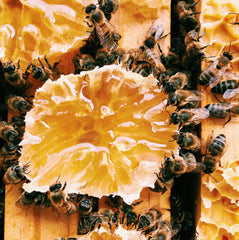
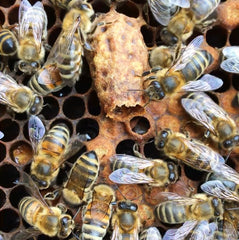

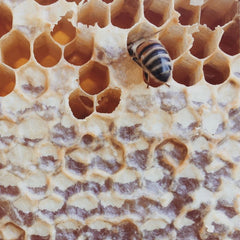
The Story of the Drones: Love, Luxury, and a Dramatic End
And of course, we also need the guys – the drones.
Drones cannot sting. They take the longest to hatch: a full 24 days. They are bigger than the worker bees – and in some ways, they live a much more comfortable life.
A drone’s only function is to find a virgin queen and mate with her. During his lazy life, he is allowed into the hive and is fed. To find his virgin queen, a drone has particularly large eyes and a keen sense of smell.
Their moment of glory happens in the air. Together with many other drones, they take flight – hoping for the big, once-in-a-lifetime act. The catch: the successful drone dies immediately. The explosive force of ejaculation throws him off the queen – and he falls dead to the ground.
Meanwhile, the queen continues flying and mates with a dozen other drones.
And what about those who come up empty? They don’t get a happy ending either. In autumn, when food becomes scarce, the workers deny the drones access to the honey stores – they simply are not let in. And so the “inactive” drones die a quiet death at the hive entrance.
A short life with a single goal – one that not all achieve.
